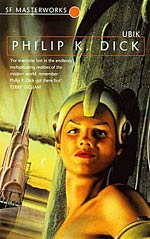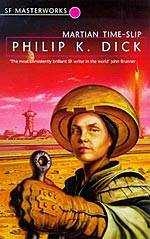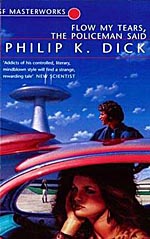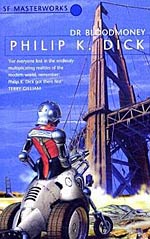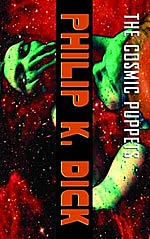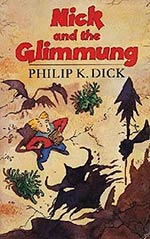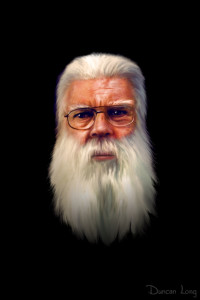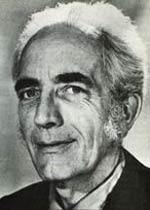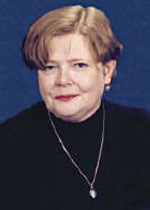Ex Libris WWEnd: Antimatter Blues by Edward Ashton
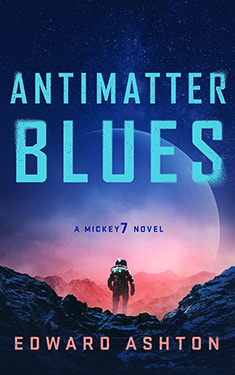 Edward Ashton’s hardcover debut, Mickey7 has been one of the buzziest sci-fi releases of 2022 and is currently in production with Oscar award-winning director Bong Joon Ho (starring Robert Pattinson, Toni Collette, and Mark Ruffalo, among others). Ashton follows up his adventurous debut with another novel in the world of Mickey7: ANTIMATTER BLUES (St. Martin’s Press, on sale 3/14/23).
Edward Ashton’s hardcover debut, Mickey7 has been one of the buzziest sci-fi releases of 2022 and is currently in production with Oscar award-winning director Bong Joon Ho (starring Robert Pattinson, Toni Collette, and Mark Ruffalo, among others). Ashton follows up his adventurous debut with another novel in the world of Mickey7: ANTIMATTER BLUES (St. Martin’s Press, on sale 3/14/23).
Summer has come to the colony on Niflheim, and Mickey Barnes has a new mission. Though he’s retired as the colony’s Expendable (and his cloning days are hopefully behind him), the survival of the colony is still balanced on a knife’s edge. Winter is coming, and the antimatter that fuels their survival is running dangerously low — or so the Commander says.
Mickey’s been tasked with retrieving the antimatter bomb that he gave to the inhabitants of the planet at the end of the first book… and embroils himself in a cross-species conflict that leaves the fate of more than one civilization in his hands. And if something goes wrong this time, he won’t be coming back.
Ashton returns with another thrilling science fiction novel that expands on the incredible world-building of Mickey7 and continues to entertain.
“Readers who enjoy the nitty-gritty view of space colonization of John Scalzi or Michael Mammay will love this… A nonstop SF adventure from beginning to end.”
— Library Journal STARRED REVIEW
“Ashton’s follow-up to his excellent Mickey7 is just as much fun as its predecessor.”
— Booklist
“Ashton’s breezy characters, especially a few alien creepers able to communicate with the humans, delight, and the grungy details of colony life are rendered as realistically as Mickey’s hunger pangs. It’s good fun with a surprisingly effective closing twist that sci-fi fans will savor.”
— Publishers Weekly
 Edward Ashton is the author of the novels Three Days in April and The End of Ordinary. He lives in upstate New York in a cabin in the woods (not that cabin in the woods) with his wife, a variable number of daughters, and an adorably mopey dog named Max. In his free time, he enjoys cancer research, teaching quantum physics to sullen graduate students, and whittling. You can find him online at edwardasthon.com or on Twitter @edastonwriting.
Edward Ashton is the author of the novels Three Days in April and The End of Ordinary. He lives in upstate New York in a cabin in the woods (not that cabin in the woods) with his wife, a variable number of daughters, and an adorably mopey dog named Max. In his free time, he enjoys cancer research, teaching quantum physics to sullen graduate students, and whittling. You can find him online at edwardasthon.com or on Twitter @edastonwriting.
Reading the Pulps: Robert F. Young
 I can’t remember ever seeing a book by Robert F. Young at a bookstore, new or used. My library has nothing by him. Young published over a 150 SF/F short stories from 1953-1987, and just five novels few fans have ever heard about. If you search for “Robert F. Young” at ABEBooks.com most of the returns are used magazines. Worlds Without End lists three collections and three novels, just about all of Young’s published work — not much to show for a lifetime of writing. Amazon offers just three short story collections still in print, and one of them is a 55 cent ebook of out-of-copyright stories.
I can’t remember ever seeing a book by Robert F. Young at a bookstore, new or used. My library has nothing by him. Young published over a 150 SF/F short stories from 1953-1987, and just five novels few fans have ever heard about. If you search for “Robert F. Young” at ABEBooks.com most of the returns are used magazines. Worlds Without End lists three collections and three novels, just about all of Young’s published work — not much to show for a lifetime of writing. Amazon offers just three short story collections still in print, and one of them is a 55 cent ebook of out-of-copyright stories.
In other words, Robert F. Young is a forgotten writer. He was never famous, but I was always delighted to buy an SF mag with one of his stories. I remembered his name. He seldom got the cover story, but I’d say he often got his name on the cover. Young’s stories were easy to read, gentle, sentimental, romantic, and usually involved fun science fictional ideas. His tales were never great, but always entertaining. He appeared in a huge variety of magazines, including Playboy, Saturday Evening Post, but mostly in science fiction digests. Towards the end of his life, his literary home seemed to be The Magazine of Fantasy and Science Fiction.
 The cliché for writers is their work will make them immortal. That’s not true, of course. Sure, a handful of writers have written things we’ve remembered for hundreds of years or even thousands, but nothing lasts forever. I wish Robert F. Young’s stories would last a little while longer. I hope reading this makes you give him a chance.
The cliché for writers is their work will make them immortal. That’s not true, of course. Sure, a handful of writers have written things we’ve remembered for hundreds of years or even thousands, but nothing lasts forever. I wish Robert F. Young’s stories would last a little while longer. I hope reading this makes you give him a chance.
I wish I knew more about Young. He was born in 1915 and died in 1986. He served in the Pacific during WWII. The most fascinating thing Wikipedia says about him is “Only near the end of his life did the science fiction community learn he had been a janitor in the Buffalo public school system.” That intrigued me. Was his whole writing career done while working as a school janitor? Did the kids know their janitor wrote science fiction? The Science Fiction Encyclopedia doesn’t offer much more about his personal life. Was he married? Did he have kids? Was he an active fan that attended conventions? Did he contribute to fanzines? I can only find one grainy photo of him. If you know more, post a comment below.
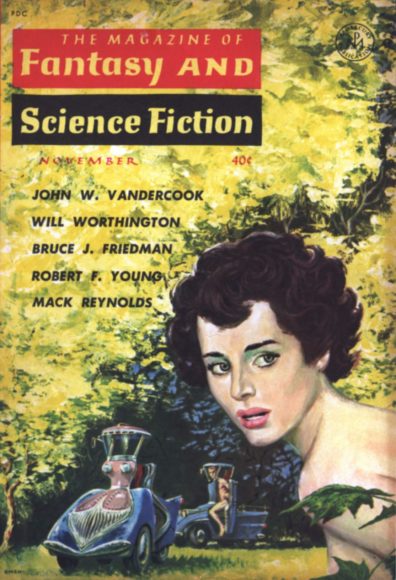 The interesting thing about Young is how readers remember him. Every now and then I’ll meet readers who loved the science fiction digests growing up like I did, and sometimes the Robert F. Young name comes up. Always fondly. I doubt Robert F. Young was anybody’s favorite writer, but quite often I’ve talked to people who said they always read his stories when one appeared in the table of contents.
The interesting thing about Young is how readers remember him. Every now and then I’ll meet readers who loved the science fiction digests growing up like I did, and sometimes the Robert F. Young name comes up. Always fondly. I doubt Robert F. Young was anybody’s favorite writer, but quite often I’ve talked to people who said they always read his stories when one appeared in the table of contents.
I envy Young. I always wanted to be a science fiction writer. Of course, I always fantasized about writing famous novels, but now, I just wish I had some short stories published. At least one story that was as good as RFY’s best. I think it’s kind of special that his stories linger on and wished before I die I could hide away a story in a magazine too. We don’t know much about Robert F. Young, but his stories leave a mysterious marker that he was once here.
The pulp and digest magazines published thousands of writers that never achieved book fame. They live on in the hearts of fans, who are mostly old now. I belong to a number of groups that remember the pulps, and I’m always surprised by how different fans fondly remember authors I can’t recall ever hearing about before.
I wonder how many Baby Boomer SF fans remember Robert F. Young? If you do, post a comment. If you’re interested in giving Young a try, his first collection from 1965, The Worlds of Robert F. Young was reprinted in 2017. I bought this recently, hoping the Avram Davidson introduction would have provided more biographical information – it didn’t.

PKD Bonanza at Audible
 Ever since 2002, I’ve been buying classic science fiction at Audible.com. I love listening to all the great science fiction stories I first discovered in the 1960s and 1970s. I now prefer to hear a book over reading it. I’m not much of a reader — my inner voice is so dull compared to professional audio book narrators. Listening makes a story come alive in a way that reading with my eyes never did. And it’s a special pleasure to “reread” all my favorites this way because it makes them feel new again.
Ever since 2002, I’ve been buying classic science fiction at Audible.com. I love listening to all the great science fiction stories I first discovered in the 1960s and 1970s. I now prefer to hear a book over reading it. I’m not much of a reader — my inner voice is so dull compared to professional audio book narrators. Listening makes a story come alive in a way that reading with my eyes never did. And it’s a special pleasure to “reread” all my favorites this way because it makes them feel new again.
On April 28th Audible.com released 11 Philip K. Dick novels, a 5-volume collection of his complete short stories, and one novella to their already extensive collection of PKD on audio. I assume the 5-volume audio collection contains the same stories that old print edition I own, The Collected Stories of Philip K. Dick published by Citadel Twilight back in the 1990s. Each audio volume has been re-titled from the Subterranean Press edition. Audible, as it often does with short story collections, doesn’t list the stories, and that’s annoying. Each volume is around 20 hours long. Check out the sample recordings. This is a huge dose of PKD – almost 100 hours – maybe an overdose. But I’m going to eventually buy them all.
What’s really exciting for me, is they have published six of the nine literary novels on audio that haven’t been produced before. These include (with date written and date first published):
- Voices from the Street (1952/2007)
- Mary and the Giant (1956/1987)
- Puttering About in a Small Land (1957/1985)
- In Milton Lumky Territory (1958/1986)
- Humpty Dumpty in Oakland (1960/1987)
- The Man Whose Teeth Were All Exactly Alike (1960/1975)
Previously published on audio were the other three mainstream novels.
- Gather Yourselves Together (1952/1994)
- The Broken Bubble (1956/1988)
- Confessions of a Crap Artist (1959/1975)
I wrote about PKD’s literary novels at SF Signal. Confessions of a Crap Artist is my all-time favorite Dick novel. He might have put more work into his literary novels, because at one time he wanted to break out of writing science fiction and go mainstream. It would have meant more money, and he would have proved himself as a “real” writer. Now he’s probably the most famous SF novelist on the planet.
Audible also came out on the 28th with (some are books with new narrators, and some are new to audio):
- Ubik
- Martian Time-Slip
- Flow My Tears, the Policeman Said
- Dr. Bloodmoney
- The Cosmic Puppets
- “Nick and the Glimmung” – novella
Here are PKD’s novels – red means there’s no audio edition at Audible.
- Gather Yourselves Together (1950)
- Voices from the Street (1952)
- Solar Lottery (1954)
- Mary and the Giant (1954)
- The World Jones Made (1954)
- Eye in the Sky (1955)
- The Man Who Japed (1955)
- The Broken Bubble (1956)
- The Cosmic Puppets (1957)
- Puttering About in a Small Land (1957)
- Time Out of Joint (1958)
- In Milton Lumky Territory (1958)
- Confessions of a Crap Artist (1959)
- The Man Whose Teeth Were All Exactly Alike (1960)
- Humpty Dumpty in Oakland (1960)
- Vulcan’s Hammer (1960)
- Dr. Futurity (1960)
- The Man in the High Castle (1961)
- We Can Build You (1962)
- Martian Time-Slip (1962)
- Dr. Bloodmoney, or How We Got Along After the Bomb (1963)
- The Game-Players of Titan (1963)
- The Simulacra (1963)
- The Crack in Space (1963)
- Clans of the Alphane Moon (1964)
- The Three Stigmata of Palmer Eldritch (1964)
- The Zap Gun (1964)
- The Penultimate Truth (1964)
- The Unteleported Man (1964)
- The Ganymede Takeover (1965) with Ray Nelson
- Counter-Clock World (1965)
- Do Androids Dream of Electric Sheep? (1966) (as Blade Runner)
- Nick and the Glimmung (1966)
- Now Wait for Last Year (1966)
- Ubik (1966)
- Galactic Pot-Healer (1968)
- A Maze of Death (1968)
- Our Friends from Frolix 8 (1969)
- Flow My Tears, the Policeman Said (1974)
- Deus Irae (1976) with Roger Zelanzy
- Radio Free Albemuth (1976; published 1985)
- A Scanner Darkly (1977)
- VALIS (1981)
- The Divine Invasion (1981)
- The Transmigration of Timothy Archer (1982)
Thank you Audible, and all the publishers. I can listen to practically everything PKD wrote.
NEW RELEASES: The Man Who Spoke Snakish by Andrus Kivirahk
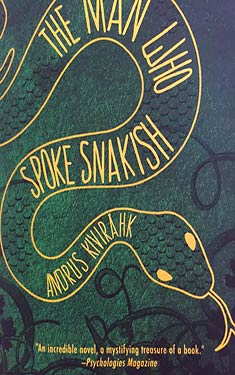 Leemet is a young man of the forest people. When he was a child, too young to remember the experience, his parents had made the move to the village. His father learned to work the fields and even developed a taste for bread, but Leemet’s mother became bored and could not adjust to village life. This made her easy pickings for a bear, those lotharios notorious for stealing away human wives. When Leemet’s father caught his wife and her lover in flagrante delicto, the startled animal bit his head off. Leemet’s mother, subsequently abandoned by the bear, returned to the forest with her infant son.
Leemet is a young man of the forest people. When he was a child, too young to remember the experience, his parents had made the move to the village. His father learned to work the fields and even developed a taste for bread, but Leemet’s mother became bored and could not adjust to village life. This made her easy pickings for a bear, those lotharios notorious for stealing away human wives. When Leemet’s father caught his wife and her lover in flagrante delicto, the startled animal bit his head off. Leemet’s mother, subsequently abandoned by the bear, returned to the forest with her infant son.
For Leemet this has been a good thing. His life in the forest is fun and adventurous. His uncle is one of the last fluent speakers of Snakish, the language that allows humans to communicate with snakes, those wisest of forest inhabitants, and exercise control over other animals. Without Snakish, it is difficult to maintain an adequate herd of wolves, and wolves are needed for both transportation and their milk. Leemet masters the ancient language, and he spends his days with human friends his own age, his older male relatives, and the invaluable snakes who offer both advice and the warmth of their burrows in the winter. He is also friendly with the primates, an older hominid species who has not left the trees and spend most of the time breeding wood lice the size of sheep.
Andrus Kivirahk is the most popular contemporary author in Estonia, known as a satirical journalist and a bestselling novelist. This novel, which appears to take place in a fantastic version of his homeland during the early middle ages, is his first to be translated into English. It is an engaging tale of old ways giving way to modernity, filled with episodes of comic invention, family drama, young love, and the sadness of old traditions giving way to a modernity that offers much but exacts a stiff toll.
Leemet is the perfect hero for such a tale, a tenth-century, Estonian Huckleberry Finn. Despite his snakish wisdom, he can be very naïve. He perceives the armored knights that come from across the sea on their armored horses as single, metallic creatures. He is surprised to discover how relatively easy they are to kill. The obese, berobed monks who accompany them he assumes are their ever-pregnant wives.
Leemet may be naïve, but he is not stupid like those who have abandoned the forest for the village. Village dwellers, vehement about their newly acquired civilized skills and Christianity, believe all sorts of superstitious nonsense about the forest and its supposedly demonic denizens. And they rejoice in their subservience to their German-speaking masters. The village leader was taken as a young man across the sea for training in civilization and the new religion. When he speaks with pride of his time spent as the bedmate to an archbishop, Leemet cannot help but feel that there is something off about this arrangement.
But Kivirahk’s novel will be the story of sad, funny, and inevitable change. As I read it, I wondered what added resonance it had for its Estonian audience, who have taken it so to heart that a popular board game has been created around it. For English readers it is a thoroughly enjoyable historical fantasy and an introduction to a major European writer.
(I received an advanced ebook of this title from Net Galley.)
Falling for Falling in Love with Hominids
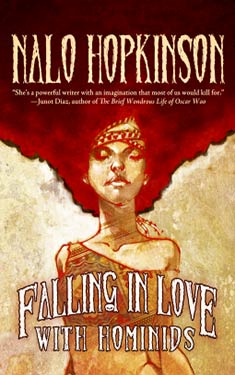 This collection of stories has been my introduction to Nalo Hopkinson. I have read a few other stories in anthologies, but I’ve never settled down with one of her novels, although I have the best intentions of doing so.
This collection of stories has been my introduction to Nalo Hopkinson. I have read a few other stories in anthologies, but I’ve never settled down with one of her novels, although I have the best intentions of doing so.
Especially after having read Falling in Love with Hominids, which is a pleasure from beginning to end. All of what I have thought of as Hopkinson’s major themes are here: race, gender, feminism and the folklore of her Caribbean heritage. (Unless you are really up on your Caribbean folklore, expect to do some serious googling with a few of these stories. I learned the Jamaican slang term for off-brand sneakers among other things.)
Hopkinson writes a short introduction for each story. In one of these she remembers her response to a student worried about tactics for suspending the reader’s disbelief. Hopkinson’s advice was, “…never give them time to disbelieve.”
I think that must work, because looking over the notes I jotted down in an attempt to remember these eighteen stories, I find descriptions that sound much weirder than the stories as I experienced them.
Delicious Monster – son visits father now living with gay lover. Why is Vishnu to leave with Garuda during solar eclipse?
The Smile on the Face – St. Margaret of Antioch. Google her. Do kids still play post office?
Raggy Dog Shaggy Dog – ruthless orchid pollination
Message in a Bottle – kids with big heads travelers from our future. All species make art.
Emily Breakfast – lazy Saturday morning for gay couple. A stolen chicken. Cats can fly. Chickens breathe fire. Lizard messenger service.
Old Habits – why would one shopping mall have such a high mortality rate?
 So she doesn’t give the reader time to think about all the strangeness because it surrounds you from the first sentence. Or it could also sneak up on you.
So she doesn’t give the reader time to think about all the strangeness because it surrounds you from the first sentence. Or it could also sneak up on you.
Hopkinson has contributed to the Bordertown Project, a shared world anthology begun by Terry Windling. Bordertown exists on the edge where the mundane world meets the world of magic. That actually sounds terrible to me, but “Ours is the Prettiest,” Hopkins contribution included here, navigates the terrain with grace and humor. And her description of how her protagonist made the transition to Bordertown could describe the process she puts her readers through in her own ficition.
The Change happened slowly… At some point it crossed my mind that the flashily overlit Honest Ed’s Discount Emporium seemed to have seamlessly metamorphosed into a store called Snappin’ Wizard’s Surplus and Salvage… but they were always bulldozing the old to replace it with something else… By the time I had to accept that I was no longer in Toronto and those weren’t just tall, skinny white people with dye jobs and contact lenses, it didn’t seem so remarkable. People changed and grew apart. As you aged, your body altered and became a stranger to you, and one day you woke up and realized that you were in a different country. It was just life. I hadn’t needed to travel to the Border; it’d come to me.
Hopkinson brings the border to us.
Stories for Chip: Fellow Writers Salute Samuel R. Delany
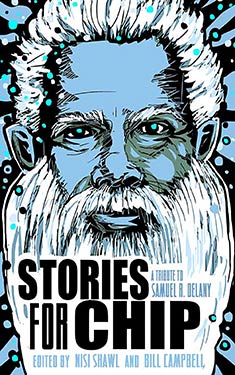 Stories for Chip is a collection of fiction and essays in honor of Samuel R. Delany. Two ways of approaching this review suggest themselves.
Stories for Chip is a collection of fiction and essays in honor of Samuel R. Delany. Two ways of approaching this review suggest themselves.
1. Since I have read only two Delany novels and would place neither on my favorite list, I could humbly remove myself from making further comment.
2. I could consider my relative lack of first hand experience of Delany’s work as a plus when it comes to considering the stories anthologized here strictly on their own merits.
Obviously I am going to go with the second option, but I need to say something more about the first.
I read Nova and The Einstein Intersection about four years ago. Nova I didn’t particularly like for reasons I no longer clearly remember. Einstein entertained and intrigued me, although I remember not quite “getting” the end. Looking at other reader reviews, I saw that I was not alone in that response. Looking recently at a range of reader reviews I see that Delany can be a polarizing author. Encomia are balanced out by disparaging comments from those who find the work opaque or over-written. This is especially true when it comes to Delany’s big books, Dahlgren and Stars in My Pocket Like Grains of Sand. In one of his letters, Philip K. Dick, an author I think very highly of, reports throwing his copy of Dahlgren across the room before he was a hundred pages into it. In some cases, readers are put off by Delany’s content. These negative, sometimes angry responses, combined with what I’ve read in this new book, have actually renewed my interest in going back to Delany.
I have also read a third Delany novel. When I was in the book business, a small gay publishing house needed to remainder a few hundred copies of Hogg, one of Delany’s forays into pornography. I bought them and sold them for between $10 and $50 as their number decreased. I also read it. I can’t take the time to be shocked, but it is a variety of violent, transgressive pornography that leaves me puzzled about both its purpose and its audience. But a recent edition of the Los Angeles Review of Books ran an article on Hogg, “Uses of Displeasure: Literary Value and Affective Disgust,” by Liz Janssen. Again, the jury is split.
Stories for Chip is not a collection of pastiches. The writers have apparently been chosen because they work under Delany’s influence and address his themes. I have to say “apparently” because the book comes with essentially no editorial content, and it is badly needed. This situation was worsened by the advance ebook I received from Net Galley. The Table of Contents listed a Contributors page, but it was nowhere to be found. And the transcription was the worst I have ever encountered. Words were run together, sometimesuptotheextentofanentire sentence. A couple of stories with particularly dense or playful language were unreadable.
There is a lot of very good stuff here, and even the absence of the Contributors section worked to my advantage. I knew only a fraction of these writers, and several of those only by name. Most of the stories occasioned a trip to Google, where I found information and links I would not have in the couple of sentences the book itself might have contained.
The contributors are an international, multiethnic roster whose interest in Delany shows in their attention to race and gender and the pleasure they take in language. The book was funded by an Indiegogo campaign, and the publisher’s website had an open call for submissions. Somehow I doubt that Junot Diaz, Nalo Hopksinson, Kit Reed, Michael Swanwick and a few of the others answered an open call. And then there is Thomas Disch, who died in 2008. As I said above, more editorial content is badly needed, but finally that can’t take away from the enjoyment of the 30 stories and four critical essays included.
A few personal favorites, specifically from authors I did not know:
Claude Lalumiere: “Empathy Evolving as a Quantum of Eight-Dimensional Perception.” A misanthropic human time traveler finds himself millions of years in the future. Octopi are the dominant species, and if they don’t eat you they absorb you. This sets off a change of incarnations over the eons, in one of which the cephalopod/human entity may become God.
Anil Menon: “Clarity.” A professor of computer science in India finds himself living inside one of the theoretical models he and his co-workers consider thought experiments.
Geentajali Dighe: “The Last Dying Man.” According to Hinduism, the world destroys and recreates itself in cycles involving millions of years. And yet it has to happen sometime. A man and his daughter in Mumbai find themselves dealing with the day-to-day reality of the transition.
Weslyan University Press keeps in print around 1,500 pages of Delany’s critical and theoretical writing, and he prompts a fair amount of critical writing from others. There are several essays here, but Walida Imarisha’s very personal account of her engagement with both the man and his writing best conveys the significance Delany has had on writers of color. “So long seen as the lone Black voice in commercial science fiction Delany held that space for all the fantastical dreamers of color who came after him.” She goes on to propose that she and other writers become “walking science fiction…living, breathing embodiments of the most daring futures our ancestors were able to imagine.”
She is not asking anyone to sign onto her vision, but reading Stories for Chip you see that vision in action.
“The End is Here!” Courtesy of Dover Books
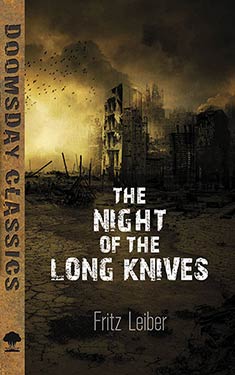 Dover Books has begun a new series of reprints called Doomsday Classics. Not the cheeriest series, perhaps, but they are pulling together a group of titles from the past 150 years that promises to combine academic interest with popular appeal for a broader science fiction readership. So far they have brought back into print Darkness and Dawn, a trilogy of novels from 1914 by George Allen England. England is largely forgotten today, but at the turn of the 20th century he was considered the American H.G. Wells. Also already on the shelves is Jack London’s The Scarlet Plague (1912). Coming up is Robertson Jeffries After London, a piece of Victorian science fiction new to me. Japan Sinks (1995) by Sakyo Komatsu is major work of Asian science fiction currently out-of-print in English.
Dover Books has begun a new series of reprints called Doomsday Classics. Not the cheeriest series, perhaps, but they are pulling together a group of titles from the past 150 years that promises to combine academic interest with popular appeal for a broader science fiction readership. So far they have brought back into print Darkness and Dawn, a trilogy of novels from 1914 by George Allen England. England is largely forgotten today, but at the turn of the 20th century he was considered the American H.G. Wells. Also already on the shelves is Jack London’s The Scarlet Plague (1912). Coming up is Robertson Jeffries After London, a piece of Victorian science fiction new to me. Japan Sinks (1995) by Sakyo Komatsu is major work of Asian science fiction currently out-of-print in English.
Their July 2015 release is The Night of the Long Knives, a disappointing effort by Fritz Leiber. Leiber wrote it as a short novel for the January 1960 issue of Amazing Science Fiction Stories, and it reads like a truncated version of what could have been a better, longer novel. Leiber sets up a convincing if by now familiar post-apocalyptic world, but the plot, such as it is, gets talked to death before it has a chance to take advantage of what Leiber is building on.
He opens with a scene familiar from classic Hollywood westerns, replacing the desert Southwest with an irradiated wasteland in the central United States. Two strangers warily approach one another, not sure if the next moments will bring bloodshed or comradeship. Actually, since this is a man and a woman, the option is bloodshed or sex, but even taking option number two will not discount resorting quickly to option number one. A propensity for murder has become second nature to those who wander the Deathlands. Leiber never satisfactorily explains why this is, but since he has created a first person narrator, such analysis would not be an option. Things just are the way they are.
The man and woman go for option number two, and the best part of the novel is their silent, methodical self-disarmaments, neither one willing to remove a weapon or an article of clothing until he or she is certain the other is making a similar concession. They also don’t speak, talking not being an accepted Deathland first-date behavior. And in this bleak, poisoned world beauty criteria have changed. The man –whose name, by the way, turns out to be Ray, the woman is Alice – is self-conscious about his eggshell baldness, but he is attracted to Alice’s radiation scars. One that traces a line from her eyebrow, across her forehead, and into her hairline provides “just the fillip” needed to make her beautiful. (Nice to think that after an atomic war the term “fillip” may make a comeback.)
This opening encounter takes up almost a third of the narrative, but things fall apart once it is over. Ray and Alice murder a handsome and to them offensively healthy man who shows up in a flying machine. They meet an old geezer they call Pop. He’s a scrounger, possibly too cracked to be dangerous. The trio flies off in the dead man’s aircraft that is preprogrammed to take them to the edges of the civilized zones where yet another war is in progress. There is little action and much boring talk. When the ship returns them to the Deathlands location they started from, they find the dying woman their civilized victim had come to save. There is more talk and the story winds down.
Leiber’s novel is a mess starting with the title. Evoking the series of assassinations that secured Hitler’s rise to power brings nothing to the narrative. The one other component that sparks any real interest is Pop’s proselytizing for his newfound commitment to stop wholesale murder. He has found a group of like-thinking ex-murderers who get together informally to help one another fight the urge when it comes on them. The loosely organized band is setting up meetings across the Deathlands. Right now it is just men, but they are thinking they should admit women. They joke about calling themselves Murderers Anonymous.
Leiber was an alcoholic who sought treatment several times. Among the Leiber papers held by the University of Indiana, there are several folders dated 1960 that contain Alcoholics Anonymous material. I don’t know how obvious or coded the AA references in The Night of the Long Knives would have been to readers of Amazing Science Fiction when the novel was published, nor what Leiber hoped to accomplish with their inclusion His recovery process must have been weighing heavily on his mind at the time, but Pop’s enthusiasm and Ray’s and Alices’s cautious curiosity about what he has to offer becomes just another loose end in the hodge-podge of the novel.
I place The Night of the Long Knives among the Leiber works for completists only.
(This review is based on an advance ebook provided by Net Galley.)
Alpha Scholarship Drive: The Future of Science Fiction is in Your Hands
FOR IMMEDIATE RELEASE
March 10, 2015
THE FUTURE OF SCIENCE FICTION IS IN YOUR HANDS!
Writing genre fiction can be a lonely business for teens. The Alpha SF/F/H Workshop brings together young writers, aged 14 to 19, for ten days of creation and peer review critiques. At the end of the workshop, students leave with new skills and a vibrant network of support.
Alphans have published in dozens of markets, including Lightspeed, Clarkesworld, Analog and Strange Horizons. Many of them have placed and won in contests such as The Dell Magazine Award, Writers of the Future, and the Scholastic Art and Writing Awards.
Tamora Pierce, author of young adult series such as Protector of the Small and The Provost’s Dog, has instructed at the workshop every year since its inception. This year, instructors include Ellen Kushner, author of the beloved Riverside books recently adapted into an award winning Audible series, Delia Sherman of Freedom Maze fame, and two-time Andre Norton Award-nominated Alaya Dawn Johnson.
Alpha works hard to keep costs low–every staff member is a volunteer, and the tuition is kept at the lowest possible level–but prospective students often require financial aid. This year–as they have for the past several–alumni have contributed writing and art to an illustrated flash fiction anthology and offered it as a donor reward in the entirely alumni-organized scholarship fund drive.
The Alpha alumni fundraiser will run March 17-26. Would you consider giving us a signal boost? Donations really do change the course of our young writers’ lives.
To learn more about the Alpha SF/F/H Young Writers’ Workshop, please visit the Alpha website, and check out our latest video, featuring interviews with Bruce Coville and Tamora Pierce.
For more information please contact:
Publicity Coordinator Lara Elena Donnelly
(502) 812-9158
lara.3lena@gmail.com
There you have it folks. Your donation will help these youngsters become the kind of writers you want to read. A worthwhile cause that you can support and even benefit from down the line.
As a further incentive all donors receive the Alphanthology, a PDF anthology of flash fiction written, illustrated, and edited by Alpha alumni. Surely that’s worth a sawbuck? Check out the Alpha site for more details and to make your donation today!
Guest Post by Ann Leckie: Personhood and Song
Ann Leckie has worked as a waitress, a receptionist, a rodman on a land-surveying crew, a lunch lady, and a recording engineer. The author of many published short stories, and secretary of the Science Fiction Writers of America, she lives in St. Louis, Missouri, with her husband, children, and cats.
 What does it mean to be human? It’s a really difficult question to answer, and one that science fiction and fantasy are particularly well-suited to tackling. Not that there’s ever been any sort of simple answer even (especially?) through fiction, but SF&F can present us with a range of characters that test the boundaries of what it means to be a person, and what that might imply about what it means to be human.
What does it mean to be human? It’s a really difficult question to answer, and one that science fiction and fantasy are particularly well-suited to tackling. Not that there’s ever been any sort of simple answer even (especially?) through fiction, but SF&F can present us with a range of characters that test the boundaries of what it means to be a person, and what that might imply about what it means to be human.
Androids and artificial intelligences are a favorite vehicle for this sort of exploration. If you build a machine that looks or acts just like a person, what’s the difference? Is there one? Is that difference important? Why? It was a question I was going to have to consider, a question that was, in some ways, going to be crucial to my novel, Ancillary Justice.
The narrator of Ancillary Justice is the troop carrier Justice of Toren. And also a unit of twenty bodies slaved to Justice of Toren, the ancillary unit Justice of Toren One Esk. My narrator is an artificial intelligence that’s also made up of human bodies. What sort of being is this?
Book Giveaway: Ancillary Justice by Ann Leckie
 It’s been awhile since we last had a contest and the folks at Orbit have given us the chance top rectify that by providing us with an autographed copy of Ann Leckie’s debut novel Ancillary Justice to give away to one lucky winner. You’ve likely already heard about this one. It was just released yesterday in the US and UK and has been making the rounds all over the blogosphere with much fanfare. This one looks a winner, folks, and I was sorely tempted to keep it for myself. This is another re-tweet this tweet, share on Facebook or post in the comments below contest so you know what to do. We’ll run this ’till next Wednesday when we’ll announce our winner.
It’s been awhile since we last had a contest and the folks at Orbit have given us the chance top rectify that by providing us with an autographed copy of Ann Leckie’s debut novel Ancillary Justice to give away to one lucky winner. You’ve likely already heard about this one. It was just released yesterday in the US and UK and has been making the rounds all over the blogosphere with much fanfare. This one looks a winner, folks, and I was sorely tempted to keep it for myself. This is another re-tweet this tweet, share on Facebook or post in the comments below contest so you know what to do. We’ll run this ’till next Wednesday when we’ll announce our winner.
In addition to the contest we’ll be featuring an author interview and a guest post from Ann Leckie herself later this week so stay tuned for those.
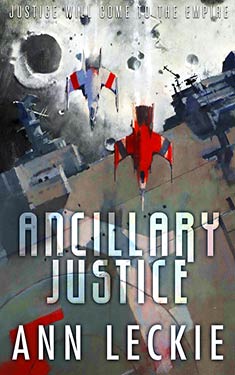 Ancillary Justice
Ancillary Justice
by Ann Leckie
JUSTICE WILL COME TO THE EMPIRE
On a remote, icy planet, the soldier known as Breq is drawing closer to completing her quest.
Breq is both more than she seems and less than she was. Years ago, she was the Justice of Toren–a colossal starship with an artificial intelligence linking thousands of corpse soldiers in the service of the Radch, the empire that conquered the galaxy.
An act of treachery has ripped it all away, leaving her with only one fragile human body. And only one purpose–to revenge herself on Anaander Mianaai, many-bodied, near-immortal Lord of the Radch.



















 Full Details
Full Details
